- Home
- Jeffery Deaver
The Kill Room lr-10 Page 18
The Kill Room lr-10 Read online
Page 18
CHAPTER 37
Rhyme had just finished his Kalik Beer at Hurricane’s restaurant when he heard a voice behind him.
“Hello.”
Mychal Poitier.
The corporal’s blue shirt was Rorschached with sweat and his dark slacks, with the regal red stripe, sandy and dotted with mud. He carried a backpack. He waved to the server and she smiled, surprised when he took a seat with the disabled man from America. She put in an order without asking him what he wanted and brought him a coconut soft drink.
“I am late because, I’m sorry to say, we have found the student. She died in a swimming accident. Excuse me for a moment. I will upload my report.” He took an iPad in a battered leather case from the bag and booted it up. He typed some words and then hit the send button.
“This will buy me a little time with you. I’ll tell them I’m following up on several other issues regarding the loss.” He nodded at the iPad. “Unfortunate situation,” he said and his face was grave. It occurred to Rhyme that Traffic, his first assignment, and then Business Inspections and Licensing had probably not provided much opportunity to experience firsthand the tragedies that fundamentally change law enforcement officers — that either temper or weaken them. “She drowned in an area of water that generally isn’t dangerous but she’d been drinking, it seems. We found rum and Coke in her car. Ah, students. They believe they are immortal.”
“May I see?” Rhyme asked.
Poitier turned the device and Rhyme studied the pictures that slowly slideshowed past. The body of the victim was starkly white from loss of blood, and water-wrinkled. Fish or other creatures had eaten away much of her face and neck. Hard to guess her age. Rhyme couldn’t recall from the poster. He asked.
“Twenty-three.”
“What was she studying?”
“Latin American literature for the semester at Nassau College. And working part time — and, of course, partying.” He sighed. “Apparently to excess. Now, I’ve called her family in America. They’re coming to claim the body.” His voice faded. “I have never made a call like that before. It was very difficult.”
She had a trim figure, athletic, a modest tat on her shoulder — a starburst — and she favored gold jewelry, though a silver necklace of small leaves surrounded her neck, now stripped of skin.
“A shark attack?”
“No, barracuda probably. We rarely get shark attacks here. And the barracuda were just feeding, after she died. They’ll occasionally bite a swimmer but the injuries are minor. She probably got caught in the riptide and drowned. Then the fish went to work.”
Rhyme noted the worst damage was around the neck. Stubby tubes of the carotid were visible through tatters of flesh. Much of the skull was exposed. With his fork Rhyme speared and then ate some more conch.
Then he slid the iPad back to the officer. “I assume, Corporal, that you are not here to arrest us.”
He laughed. “It did occur to me. I was quite angry. But, no, I’ve come here to help you again.”
“Thank you, Corporal. And now in fairness I’ll share with you everything that I know.” And he explained about NIOS, about Metzger, about the sniper.
“Kill Room. What a cold way to put it.”
Now that he knew Poitier was, more or less, on his side, Rhyme told him that Pulaski was waiting to speak to the maid at the South Cove Inn to learn more about the sniper’s reconnaissance mission the day before he shot Moreno.
Poitier grimaced. “An officer from New York is forced to do my job for me. What a state of things, thanks to politics.”
The server brought the food — a hot stew of vegetables and shreds of dark meat, chicken or goat, Rhyme guessed. Some fried bread too. Poitier tore a piece off the bread and fed it to the potcake dog. He then pulled his plate toward him, tucked his napkin into his shirt, just where the chain that led to his breast pocket was affixed to a collar button. He keyboarded on the iPad then looked up. “I will eat now and while I eat I can tell Thom about the Bahamas, the history, the culture. If he’d like.”
“I would, yes.”
Poitier pushed the iPad close to Rhyme. “And you, Captain, might wish to look at some pictures in the photo gallery of our beautiful scenery here.”
As the corporal turned to Thom and they struck up a conversation Rhyme began scrolling through the gallery.
A picture of the Poitier family, presumably, at the beach. A lovely wife and laughing children. Then they were at a barbecue with a dozen other people.
A picture of the sunset.
A picture of a grade school music recital.
A picture of the first page of the Robert Moreno homicide report.
Like a spy, Poitier had photographed it with the camera in the iPad.
Rhyme looked up at the corporal but the cop ignored him, continuing to share with Thom the history of the colony, and with the potcake dog more lunch.
First, there was an itinerary of Moreno’s last days on earth, as the corporal could piece it together.
The man and his guard, Simon Flores, had arrived in Nassau late Sunday, May 7. They had spent Monday out of the inn, presumably at meetings; Moreno did not seem like the sort to swim with the dolphins or go Jet Skiing. The next day beginning at nine he had several other visitors. Shortly after they left, about ten thirty, the reporter Eduardo de la Rua arrived. The shooting was around eleven fifteen.
Poitier had identified and interviewed Moreno’s other visitors. They were local businessmen involved in agriculture and transport companies. Moreno planned to form a joint venture with them when he opened the Bahamian branch of his Local Empowerment Movement. They were legitimate and had been respected members of the Nassau business community for years.
No witnesses reported that Moreno had been under surveillance or that anyone had shown any unusual interest in him — other than the phone call before he arrived and the brown-haired American.
Then Rhyme turned to the pages of the scene itself. He was disappointed. The RBPF crime scene team had found forty-seven fingerprints — other than the victims’—but had analyzed only half of them. Of those identified, all were attributed to the hotel staff. A note reported that the remaining lifted prints were missing.
Little effort had been made to collect trace from the victims themselves. Generally, in a sniper killing, such information about the spot where the victim is shot wouldn’t be that helpful, of course, since the shooter was a distance away. In this case, though, the sniper had been in the hotel, albeit a day earlier, and might even have snuck into the Kill Room to see about vista and shooting angles. He could easily have left some trace, even if he didn’t leave any prints. But virtually no trace had been collected from the room, only some candy wrappers and a few cigarette butts beside an ashtray near the guard’s body.
However, the next pages on the iPad, photos of the Kill Room itself, were illuminating. Moreno had been shot in the living room of the suite. Everything and everyone in the room was covered with shards of glass. Moreno lay sprawled on a couch, head back, mouth open, a bloodstain on his shirt, in the center of which was a large black dot, the entrance wound. The upholstery behind him was covered in dark blood and gore, from what would have been a massive exit wound caused by the sniper’s bullet.
The other victims lay on their backs near the couch, one a large Latino, identified in the photo as Simon Flores, Moreno’s guard, the other a dapper bearded balding man in his fifties, de la Rua, the reporter. They were covered with broken glass and blood, their skin torn and slashed in dozens of places.
The bullet itself was photographed lying on the floor next to a small sandwich board evidence location card bearing the number 14. It was lodged in the carpet a few feet behind the couch.
Rhyme flipped the page, expecting to see more.
But the next image was of the corporal with his wife again, sitting in beach chairs.
Without looking his way, Poitier said, “That’s all there is.”
“Not the autopsy?”
Rhyme asked, “The victims’ clothing?”
Now he regarded the criminalist. “At the morgue.”
“I asked my associate at the South Cove to track down de la Rua’s camera, tape recorder and anything else he had with him. He said they went to the morgue. I’d love to see them.”
Poitier gave a skeptical laugh. “I would have too.”
“Would have?”
“Yes, you caught that, Captain. By the time I inquired about them they were missing, along with the victims’ more valuable personal effects.”
Rhyme had noticed in the picture of the bodies that the guard wore a Rolex watch, and a pair of Oakley sunglasses protruded from his pocket. Near the reporter lay a gold pen.
Poitier added, “Apparently you must be fast here securing evidence when you run a scene. I’m learning that. The lawyer I was mentioning?”
“The prominent lawyer.”
“Yes,” Poitier said. “After he was killed and before our detectives got there, half the office was looted.”
Rhyme said, “You have the bullet, though.”
“Yes. In our evidence locker. But that meeting with Assistant Commissioner McPherson after you left headquarters? It was to order me to deliver to him all the evidence in the Moreno case. He has taken custody and sealed the locker. No one else can have access. Oh, he also ordered me to have no contact whatsoever with you.”
Rhyme sighed. “They really don’t want this case to go forward, do they?”
With a bitterness Rhyme had not heard before, he said, “Ah, but the case has gone forward. Indeed, it is concluded. The cartels have murdered the victim out of retribution for one thing or another. Who can tell, with those inscrutable cartels?” The man grimaced. Then his voice lowered. “Now, Captain Rhyme, I couldn’t get you your physical evidence, as I’d hoped. But I can play tour guide.”
“Tour guide?”
“Indeed. We have a wonderful tourist attraction on the southwest coast of New Providence Island. A spit of land a half mile long, ravaged by hurricanes, composed mostly of rock and beaches with tainted sand. The highlights are a trash tip, a metal fabrication plant cited frequently for polluting and a company that shreds tires for recycling.”
“Sounds charming,” Thom said.
“It’s quite popular. At least it was for one American tourist. He visited it on the ninth of May. At around eleven fifteen in the morning. One of the more attractive sights he enjoyed was of the South Cove Inn. An unobstructed view, exactly two thousand one hundred and ten yards away. I thought that you, as a tourist to our country, might enjoy the sights as well. Am I right?”
“You are indeed, Corporal.”
“Then we should go. I will not have a career as a tour guide for much longer.”
CHAPTER 38
As she sped downtown, Amelia Sachs disconnected the call from Rodney Szarnek, with the Computer Crimes Unit. She’d used a prepaid mobile — paid for out of her own pocket, with cash, of course — and was confident that the conversation hadn’t been intercepted by the man they were now in the process of tracking down.
Szarnek had told her that the NIOS sniper was presently having a conversation near the Wall Street area of the city while on foot.
The cybercrimes cop had given Sachs the general location of the man and she was speeding there now. When she arrived she’d call back and Rodney’d try to pinpoint the exact coordinates.
She slammed the clutch of her Torino Cobra to the floor and downshifted hard, rev-matched and then sped up, leaving a twin-stripe signature in rubber on the concrete.
She wove through traffic until a jam loomed. “Come on, come on.” She detoured onto a crosstown street east, skidding into what would have been a U-turn, except to avoid a sudden jaywalker she had to make it a Q. She tried again and was soon bolting through side streets, making her way east and south, toward downtown.
“Hell,” Sachs muttered, faced with another jam, and decided to conscript the closest cross street, which was more or less clear, though it happened to be one-way, against her. The maneuver threw drivers into panic and raised a symphony of off-pitch horns. Some single fingers too. Then she zipped past a yellow cab just before the driver sought the sidewalk and she was on Broadway, heading south. She paused for most of the red lights.
There’s a lot of controversy about cell phone companies’ giving law officers details about phone use and location. Generally in an emergency, the providers will cooperate without a warrant. Otherwise, most will require a court order. Rodney Szarnek didn’t want to take any chances and so after learning the sniper’s number from Pulaski in the Bahamas he’d contacted a magistrate and gotten paper issued — both for a five-second listen-in, to snag the voiceprint, and to track the location.
Szarnek had learned that the phone was in use around the corner of Broadway and Warren Street, using basic triangulation for that information, which gave rough estimates. He was presently working on interpolating signal data from the nearby network antennas. Searching in urban areas was much easier because many more towers were erected there than in rural areas. The downside, of course, was that there were many more users in any given area of a city, so it was harder to isolate your particular suspect than, say, in farmland.
Szarnek was hoping to nail down GPS data, which was the gold standard of tracking and would give the location of the sniper to within a few feet.
Finally Sachs arrived in the general vicinity, took a turn at forty, missing both a bus and a hot dog stand by inches, and skidded to a stop on a side street off Broadway. The aroma of baking tires rose, a smell nostalgic and comforting.
She looked around at the hundreds of passersby, about 10 percent of them on their phones. Was the shooter one of the people she was peering at right now? The lean young man with the crew cut, wearing khaki slacks and a work shirt? He looked military. Or the sullen, dark-complected man who was in a badly fitting suit and looking around suspiciously from behind darkly tinted sunglasses? He looked like a hit man but might have been an accountant.
How long would Bruns stay on the line? she wondered. If he disconnected they could still follow him, unless he pulled the battery out. But it was easier to spot someone actually using a phone.
She reminded herself too: This could be a trap. She recalled all too clearly the explosion at Java Hut. The sniper knew about the investigation. He clearly knew about her; Sachs’s phone was the one he’d tapped to learn about the coffee shop. A trickle of electric fear down her spine once more.
Her own mobile trilled.
“Sachs.”
“Got him on GPS,” Rodney Szarnek called excitedly, like a teenager (he’d once said being a cop was nearly as much fun as playing Grand Theft Auto). “We’re in real time, on the provider’s server. He’s walking on the west side of the street, Broadway. Just at Vesey now.”
“I’m on the move.” Sachs started in the direction he’d indicated, feeling the pain in her left hip; the knee alone wasn’t torment enough apparently. She dug into her back pocket — felt past the switchblade and pulled out a blister pack of Advil. Ripped it open with her teeth, swallowed the pills fast and littered the wrapper away.
She closed in on her target as quickly as she could.
Szarnek: “He’s stopped. Maybe for a light.”
Dodging through pedestrian traffic the same way she’d woven through vehicular moments ago, Sachs got closer to the intersection where a red light stopped southbound traffic and pedestrians.
“Still there,” Szarnek said. There was no rock music pumping into his office at the moment.
She could see, about forty feet away, the red light yield to green. Those waiting at the curb surged across the street.
“He’s moving.” One block later, Szarnek said unemotionally, “He’s disconnected.”
Shit.
Sachs sped up to see if she could spot anybody holstering a phone. No one. And she couldn’t help but think
that maybe the most recent call was the last he’d make with the tainted phone. Their sniper was, after all, a pro. He must know there was some liability in mobiles. Maybe he’d even spotted her and was about to send his cell into the same sewer system graveyard she just had.
At Dey Street the light changed to red. She had to stop. Surrounded by a crowd of perhaps twenty people — businessmen and — women, construction workers, students, tourists. Quite the ethnic mix, of course, Anglo, Asian, Latino, black and all combinations.
“Amelia?” Rodney Szarnek was on the line.
“Go ahead,” she said.
“He’s getting an incoming call. Should be ringing now.”
Just as the phone in the pocket of the man inches to Sachs’s right began to buzz.
They were literally shoulder-to-shoulder.
He fit the rough description of the man in the South Cove Inn, according to Corporal Mychal Poitier, the Bahamian cop: white male, athletic figure, compact. He wore slacks, shirt and a windbreaker. A baseball cap too. She couldn’t tell if he had brown hair; it seemed more dark blond, but a witness could easily have described that as brown. The cut was short, like their sniper’s. His laced shoes were polished to a shine.
Military.
She said cheerfully into her phone, “Sure. That’s interesting.”
Szarnek asked, “You’re next to him?”
“That’s exactly right.” Don’t overdo the playacting, she told herself.
The light changed and she let him step away first.
Sachs wondered if there was anything she could do to get the man’s identity. She and Rhyme had worked a case a few years ago in which they’d sought the help of a young woman illusionist and sleight-of-hand artist, whose skills included pickpocketing — for theatrical entertainment only, she’d laughingly assured them — Sachs could have used her now. Was there any way she herself might slip her fingers into the man’s jacket pocket to boost a wallet or receipt?
Impossible, she decided. Even if she’d had this skill, the man seemed far too vigilant, looking around frequently.

 A Maiden's Grave
A Maiden's Grave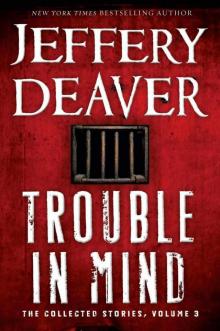 Trouble in Mind: The Collected Stories - 3
Trouble in Mind: The Collected Stories - 3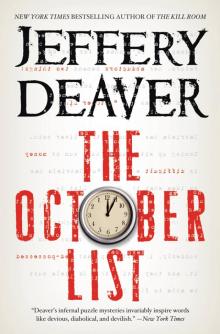 The October List
The October List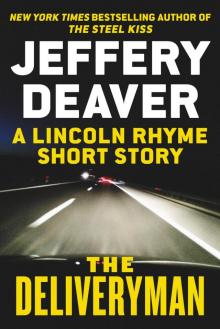 The Deliveryman
The Deliveryman Garden of Beasts
Garden of Beasts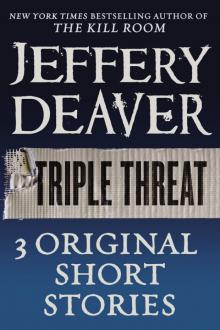 Triple Threat
Triple Threat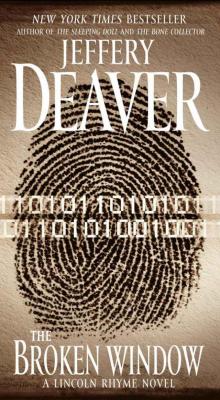 The Broken Window
The Broken Window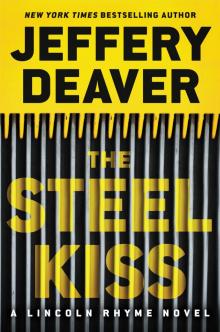 The Steel Kiss
The Steel Kiss Twisted: The Collected Stories - 1
Twisted: The Collected Stories - 1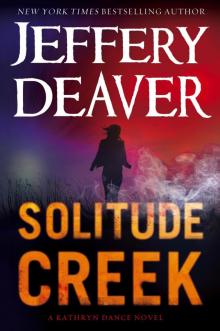 Solitude Creek
Solitude Creek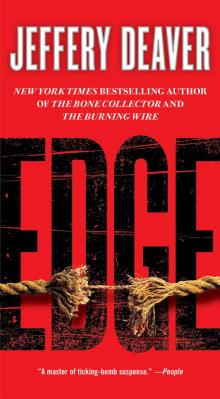 Edge
Edge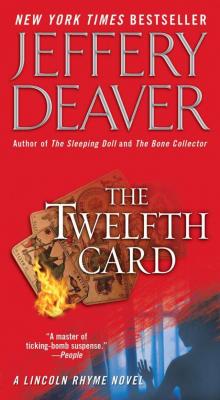 The Twelfth Card
The Twelfth Card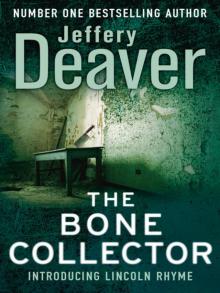 The Bone Collector
The Bone Collector The Stone Monkey
The Stone Monkey The Sleeping Doll
The Sleeping Doll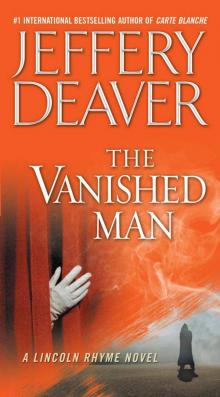 The Vanished Man
The Vanished Man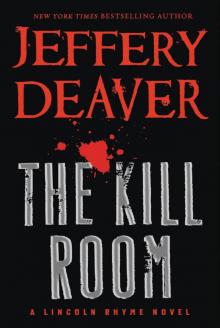 The Kill Room
The Kill Room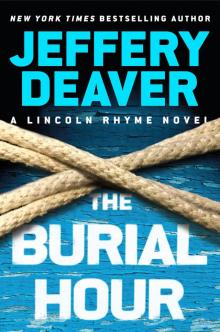 The Burial Hour
The Burial Hour An Acceptable Sacrifice
An Acceptable Sacrifice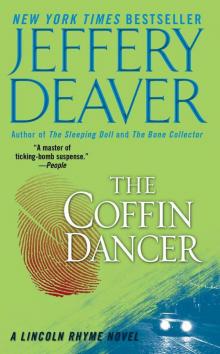 The Coffin Dancer
The Coffin Dancer The Lesson of Her Death
The Lesson of Her Death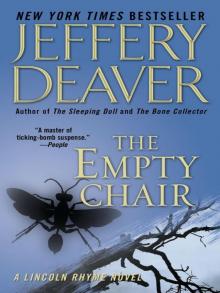 The Empty Chair
The Empty Chair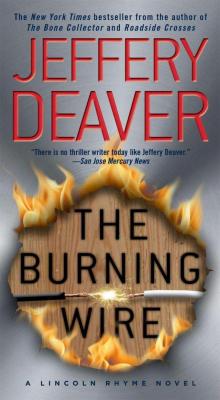 The Burning Wire
The Burning Wire Watchlist
Watchlist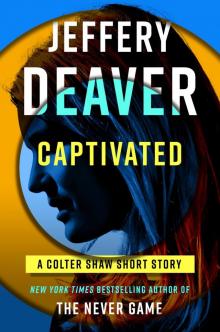 Captivated
Captivated The Cold Moon
The Cold Moon Speaking in Tongues
Speaking in Tongues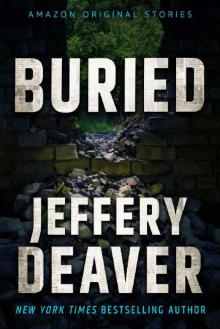 Buried (Hush collection)
Buried (Hush collection)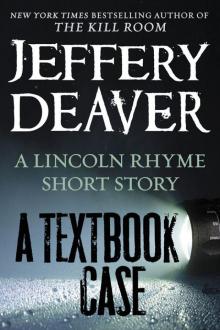 A Textbook Case
A Textbook Case The Victims' Club
The Victims' Club Nothing Good Happens After Midnight: A Suspense Magazine Anthology
Nothing Good Happens After Midnight: A Suspense Magazine Anthology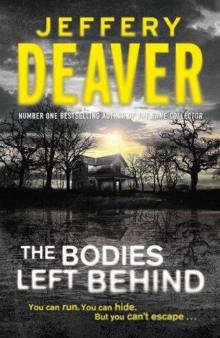 The Bodies Left Behind
The Bodies Left Behind Turning Point
Turning Point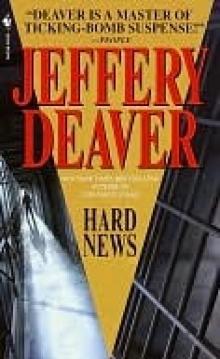 Hard News
Hard News The Blue Nowhere
The Blue Nowhere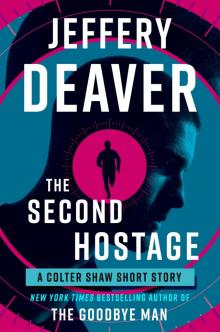 The Second Hostage
The Second Hostage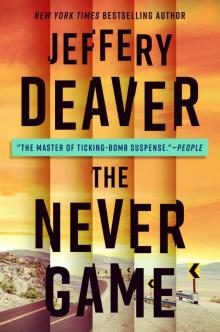 The Never Game
The Never Game The Devil's Teardrop
The Devil's Teardrop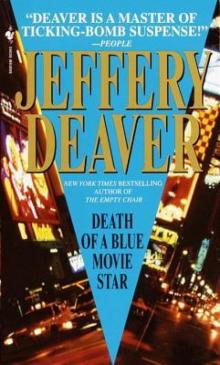 Death of a Blue Movie Star
Death of a Blue Movie Star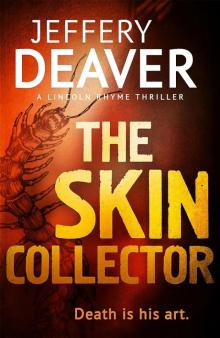 The Skin Collector
The Skin Collector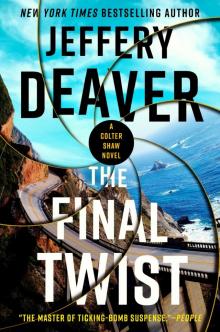 The Final Twist
The Final Twist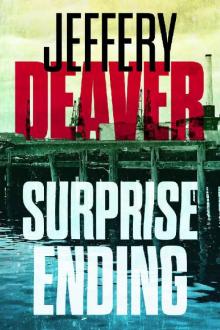 Surprise Ending
Surprise Ending Twisted: The Collected Stories
Twisted: The Collected Stories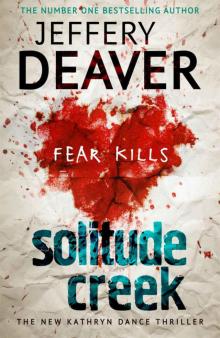 Solitude Creek: Kathryn Dance Book 4
Solitude Creek: Kathryn Dance Book 4 Twisted: The Collected Short Stories of Jeffery Deaver
Twisted: The Collected Short Stories of Jeffery Deaver Rhymes With Prey
Rhymes With Prey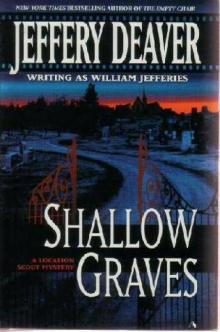 Shallow Graves
Shallow Graves Bloody River Blues
Bloody River Blues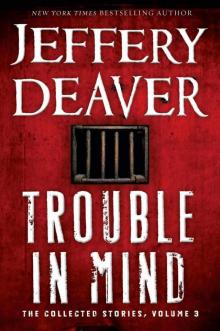 Trouble in Mind: The Collected Stories, Volume 3
Trouble in Mind: The Collected Stories, Volume 3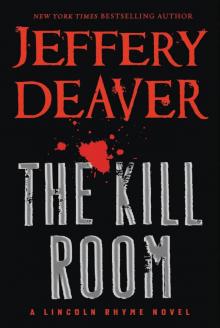 Lincoln Rhyme 10 - The Kill Room
Lincoln Rhyme 10 - The Kill Room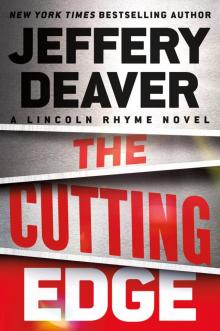 The Cutting Edge
The Cutting Edge Where the Evidence Lies
Where the Evidence Lies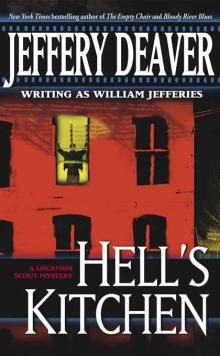 Hell's Kitchen
Hell's Kitchen Twisted
Twisted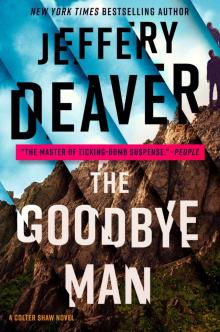 The Goodbye Man
The Goodbye Man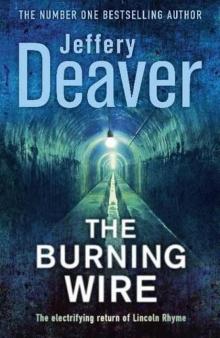 The burning wire lr-9
The burning wire lr-9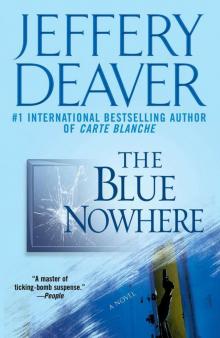 The Blue Nowhere: A Novel
The Blue Nowhere: A Novel Roadside Crosses: A Kathryn Dance Novel
Roadside Crosses: A Kathryn Dance Novel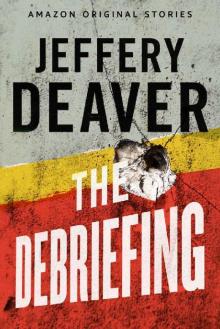 The Debriefing
The Debriefing More Twisted: Collected Stories, Vol. II
More Twisted: Collected Stories, Vol. II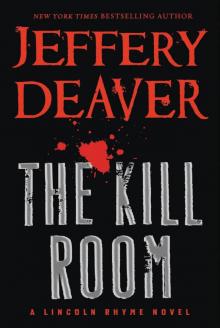 The Kill Room lr-10
The Kill Room lr-10 A Dish Served Cold
A Dish Served Cold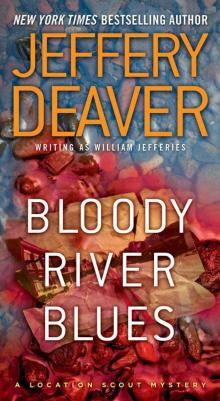 Bloody River Blues: A Location Scout Mystery
Bloody River Blues: A Location Scout Mystery The Bodies Left Behind: A Novel
The Bodies Left Behind: A Novel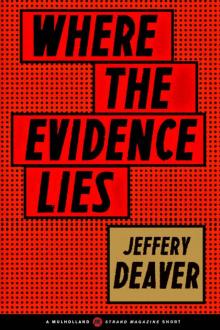 Where the Evidence Lies (A Mulholland / Strand Magazine Short)
Where the Evidence Lies (A Mulholland / Strand Magazine Short)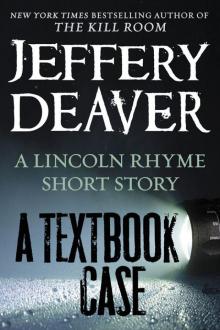 A Textbook Case (lincoln rhyme)
A Textbook Case (lincoln rhyme) Copycat
Copycat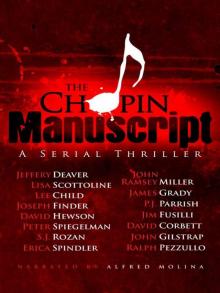 The Chopin Manuscript: A Serial Thriller
The Chopin Manuscript: A Serial Thriller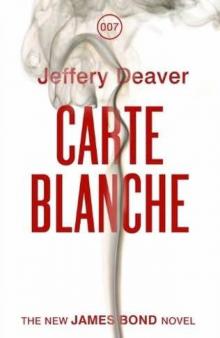 Carte Blanche
Carte Blanche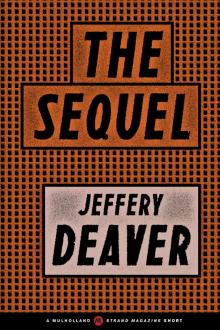 The Sequel
The Sequel